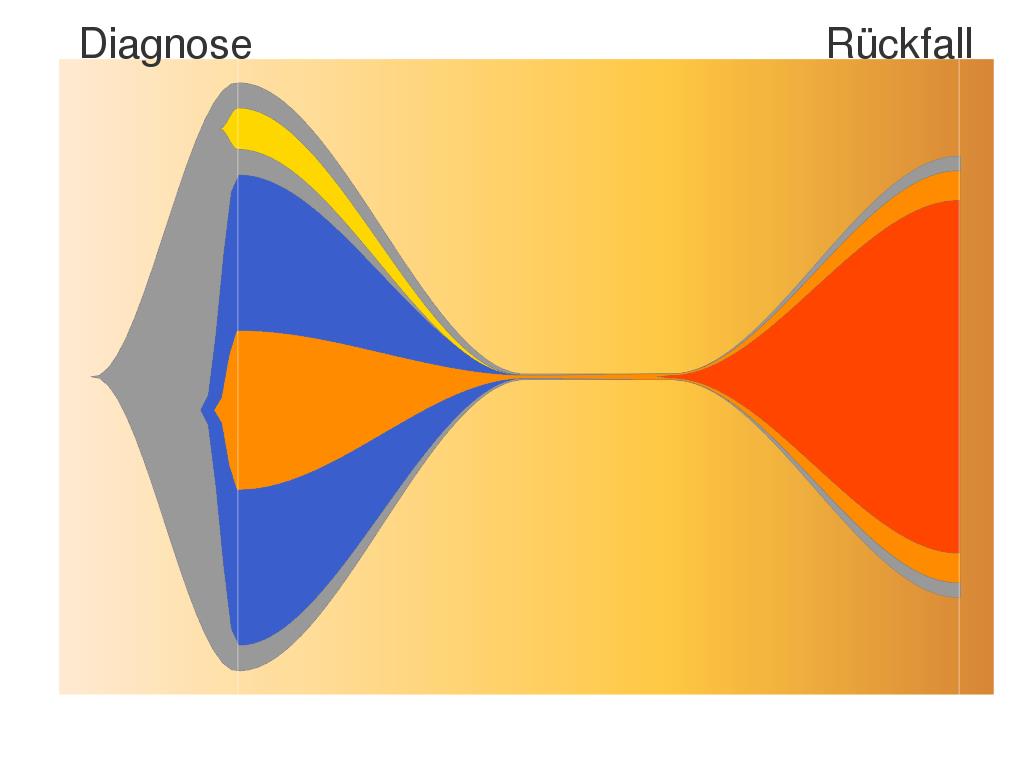03/04/2018
Print PageMutation profiles can help identify relapse risk in leukemia
Genes that play a role in epigenetic regulation were found to mutate particularly often. These are the genes that can affect the activity patterns of large numbers of genes. In particular, the family of histone demethylases was affected in several patients. The scientists identified the KDM6A histone demethylase gene as being an especially interesting biomarker for resistance against the chemotherapy drug cytarabine. Patients with low activity of this gene suffered a relapse much earlier than patients with high activity of this gene.
The effect was particularly marked in men. “The KDM6A gene is carried on the X chromosome,” explains Philipp Greif, head of the DKTK young investigator group at University Hospital Munich (LMU). “Men have only one copy of this gene, which means they cannot compensate for genetic errors, unlike women, who have two copies on the two X chromosomes.” Defects in the KDM6A gene have already been linked to other cancers.
However, the earliest relapses were experienced by patients whose leukemia cells did not undergo any significant genetic changes during therapy. “For us, that’s an indication that there was a resistant clone present before treatment started which was able to spread successfully during treatment,” explains Philipp Greif.
In future studies, Philipp Greif, Karsten Spiekermann and their colleagues therefore plan to concentrate on the genetic profiles of leukemia patients with early relapses: “Using genetic activity profiles and by analyzing epigenetic patterns, we hope to identify the key resistance genes that can be used to avoid relapses or to treat them at an early stage.”
The project was funded by the German Research Foundation (DFG), Collaborative Research Center (CRC) 1243 Cancer Evolution.
Original Publication:
Greif PA et al. Evolution of Cytogenetically Normal Acute Myeloid Leukemia During Therapy and Relapse: An Exome Sequencing Study of 50 Patients. Published in Clin Cancer Res. 2018 Apr 1;24(7):1716-1726. doi: 10.1158/1078-0432.CCR-17-2344.
